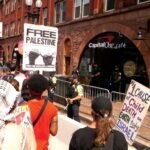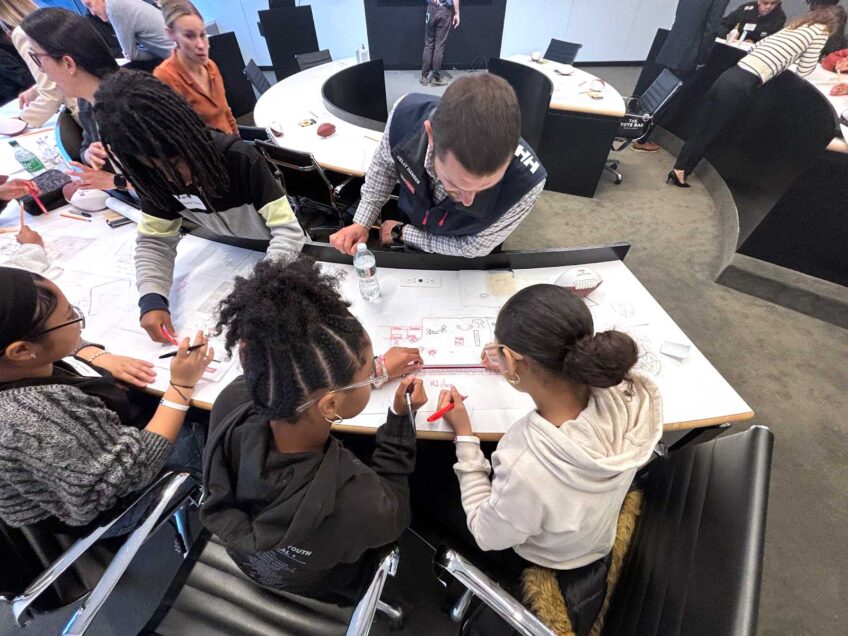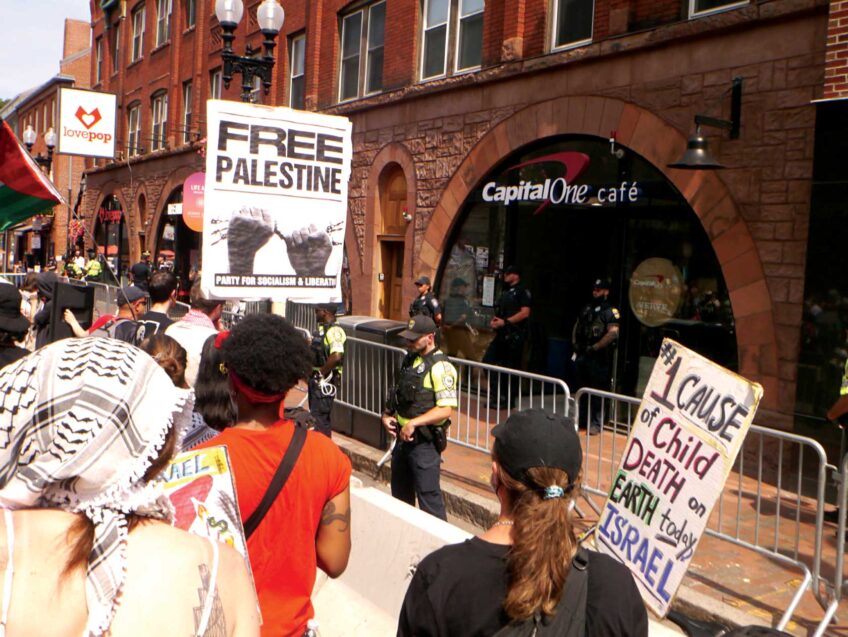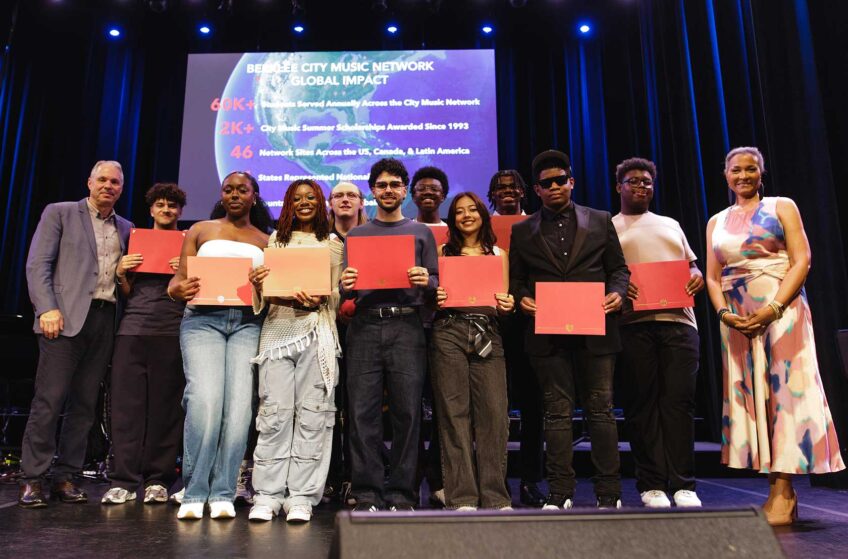Battle brewing in redistricting suit
Dorchester, Southie electeds claim Council map violated voters’ rights

According to the plaintiffs suing the Boston City Council over the redistricting map, the body violated the Voting Rights Act of 1965 by taking race into account in re-drawing district lines.
Lining up in support of the lawsuit are a Who’s Who of Irish American elected officials representing South Boston and Dorchester: Congressman Steve Lynch, state Sen. Nick Collins and the city’s four Irish American councilors.
On the other side are the defendants — the City Council and the City of Boston — and a collection of civil rights organizations that have signed on to an amicus brief rejecting the plaintiffs’ assertions of rights violations.
“[The] plaintiffs are impermissibly attempting to upend a legitimate legislative process because they did not achieve their desired outcome,” the amicus brief reads.
Between the allegations in the plaintiffs’ complaint and the defendants’ version of what happened during redistricting is a seemingly unbridgeable gulf of contradictory statements.
On the plaintiffs’ side, at-large Councilor Erin Murphy claims that the rights of white voters have been violated.
“The approved map is designed to diminish the voting power of white voters in City Council District 3 whose rights are sacred under the [Voting Rights Act] and the 14th Amendment,” she wrote in an affidavit.
On the other side, Lawyers for Civil Rights Executive Director Ivan Espinoza Madrigal, who signed on to the amicus brief, says there have been no civil rights violations for the plaintiffs.
“Ultimately, the plaintiffs are not entitled to the relief they claim because they are not a protected class,” Espinoza Madrigal told the Banner.
How it started
Municipalities and states are required to re-draw district lines following each decennial U.S. Census if population changes have resulted in unequal populations in districts. This is to ensure each councilor represents an equal proportion of the city’s population.
In Boston, the population in City Council District 2, represented by Council President Ed Flynn, grew by a greater amount than any other district, in large part due to the creation of the Seaport District neighborhood and increased condominium construction throughout the South Boston, Chinatown and South End neighborhoods within the district.
While the ideal population average for each district is 75,071 people, Flynn’s district in 2020 had 88,552 people. At the same time, neighboring District 3, represented by Councilor Frank Baker of Dorchester, grew more slowly than any other district in the city, resulting in a deficit of 6,511 below the ideal average. Because it had fewer people than any other district, District 3 would have to add precincts from adjacent districts.
There was a third imperative. The Dorchester/Mattapan-based District 4, represented by Brian Worrell, had only 9.4% white people in a city where whites make up 44.7% of the population. Under voting rights law, districts that are tightly packed with Blacks, Latinos and Asians are said to diminish the population and power of people of color in adjacent districts. Legislatures and city councils can be sued, under the Voting Rights Act, for “packing,” as the practice is called.
Councilors sought to lower the over-concentration of Black, Latino and Asian people in District 4 and even out the population surplus in Flynn’s district and the deficit in Baker’s. In November, nine councilors voted in support of the so-called “unity map,” which added South Boston precincts from Flynn’s district into Baker’s, added several precincts from Worrell’s district into Baker’s and added several of Baker’s precincts into Worrell’s. The Council voted 9-4 in favor of the map, with “no” votes from Flynn, Baker, Murphy and at-large Councilor Michael Flaherty.
What’s the lawsuit alleging?
The plaintiffs allege that the council had as a primary objective lessening concentrations of whites and Blacks in each district.
“This redistricting plan was motivated by a desire to achieve ‘racial balancing’ between various Districts in the City of Boston,” lawyers for the plaintiffs argue. “Primarily, the goal was to make white-majority districts less white, and African American-majority districts less Black.”
While Worrell’s District 4 went from 91% people of color to 88% with the transfer of a predominantly Vietnamese American, conservative-voting Field’s Corner precinct into Baker’s district, the racial make-up of other districts did not change substantially. Baker’s district, which picked up predominantly white districts in the South End and South Boston, remains largely white.
“At most, the record indicates that during the redistricting process, the City Council was aware of racial demographics and sought to adhere to governing VRA principles — far from violating the Constitution, that is responsible governance,” the amicus brief states.
For proof of the council’s racial intent, the amicus brief notes, the complaint relies heavily on the statements of lead plaintiff and Ward 6 Democratic Committee Chairman Robert O’Shea, along with Flynn, Baker and Murphy.
In early March, the plaintiffs replaced O’Shea with Dorchester-based entrepreneur and conservative columnist Rasheed Walters, whom their attorneys say complains that Worrell’s district has lost too many Black voters.
“Mr. Walters believes that the redistricting map violates his voting rights and the City Charter by gerrymandering District 4 so it is no longer a majority Black seat,” the complaint reads. “Mr. Walters worries that this forced gentrification of District 4 may result in the Black voters of District 4 never being represented by an African American again.”
It’s worth noting that District 4, with 53% Black residents before and after the redistricting process, has a higher concentration of African American residents than any other in the city.
“It remains a viable minority district,” Espinoza Madrigal says.
Open meeting law
The lawsuit also alleges that the Council violated open meeting laws, which mandate that meetings where more than two councilors are present and where Council business is discussed be advertised in advance and be open to the public. The complaint mentions three meetings: an Oct. 10 meeting held by the NAACP Boston Branch; an Oct. 18 press conference; and an Oct. 20 meeting at the Condon School in South Boston, which was convened by Council President Ed Flynn.
NAACP Boston Branch President Tanisha Sullivan noted that members of the council were present at the NAACP meeting and press conference, but they were not allowed to speak at either event.
“I personally made an announcement in front of everybody that they were there to observe, but they were not permitted to speak,” Sullivan said. “The NAACP, Mass VOTE, any community-based organization can call community meetings and they are not subject to open meeting laws. Open meeting laws only apply to the Council body.”
While white councilors spoke at Flynn’s meeting in South Boston, including those testifying on behalf of the plaintiffs, no councilors of color did. For a time, at-large Councilor Julia Mejia translated the meeting into Spanish, as Flynn provided no translation, but she was shouted down by angry South Boston residents.
The plaintiffs
The plaintiffs include Walters, Rita Dixon, Shirley Shillingford, former City Councilor Maureen Feeney, Phyllis Corbitt, The South Boston Citizens Association, the Martin F. McDonough American Legion Post, St. Vincent’s Lower End Neighborhood Association and Old Colony Neighborhood Association.
Shillingford, the longtime head of the Caribbean Carnival Association of Boston, believes that the redistricting plan “will divide the Afro-Caribbean community in and around Mission Hill in Roxbury, diluting the voice of the Afro-Caribbean community,” according to the plaintiff’s complaint.
Shillingford lives in Mission Hill, a neighborhood where district lines remain unchanged in the new map. Walters lives in a precinct that remains in District 4.
As in the rest of the city, the boundaries of District 4 have changed little since the Council first drew district lines in 1982. Like most Boston neighborhoods — including Dorchester, the South End, Mission Hill and Roslindale — Mattapan has always been split between two districts.
Sullivan says she doubts the veracity of the plaintiff’s claims will hold up in court.
“People can say anything,” she said. “It doesn’t make it right. It doesn’t make it the truth.”







